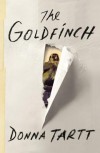Wordhorse
Wordhorse is a website about books, writing and literary culture. We publish book reviews, publishing news, literary features and author interviews.
Wool
 A compelling read, Wool is set in a post-apocalyptic future in which humanity survives in a vast underground silo.
A compelling read, Wool is set in a post-apocalyptic future in which humanity survives in a vast underground silo. This is an unusual book in that it takes quite a long time to establish who the main protagonist is. The reason behind the odd structure is that it started life as a short story, released in the summer of 2011 via Amazon's Kindle Direct Publishing platform. When audience appetite created demand for further instalments, author Hugh Howey wrote and released the rest of the story in four successive instalments — and gave up his day job at a bookshop. Thus, issues with the novel are often down to the manner in which it was put together. For instance, the romantic lead is not nearly as well drawn as the other main characters and seemed to appear out of nowhere. That said, it is a fascinating way of working, more akin to the serialised fiction popular in the Victorian era.
The reader's attention is absorbed in unlocking the mysteries of the silo — a vast underground structure comprised of 150 levels. The decayed world outside can only be seen via a screen that transmits an image of a ruined landscape. In the silo the ultimate punishment takes the form of 'cleaning', in which the condemned are sent out to the toxic air to clean the camera sensors before they collapse and die. One of the book's many mysteries is: why do people agree to clean? In this aspect, Howey is a great storyteller. He knows just how to tempt and bait the reader to keep them turning the page.
The plot races forward, maintaining the reader's interest until the very end. Yet, the world building in Wool feels spare when compared to the richness of fictional worlds in works such as Christopher Priest's The Inverted World or Arthur C Clarke's The City and the Stars — which tackle similar themes. This takes away from the reading experience, since the narrative of Wool is built around its setting. More sensory details and a broader sense of the silo's history and culture would have given the novel greater depth. For instance, the children’s books that appear to be the only literature passed down to the subterranean inhabitants would surely have created strong emotional associations and vivid memories, which one of the characters could have shared with the reader.
Despite its flaws, Wool is a thrilling story full of plot twists, in which the protagonist is a tough-as-nails young woman called Juliette. No wonder Ridley Scott has bought up the film rights.




